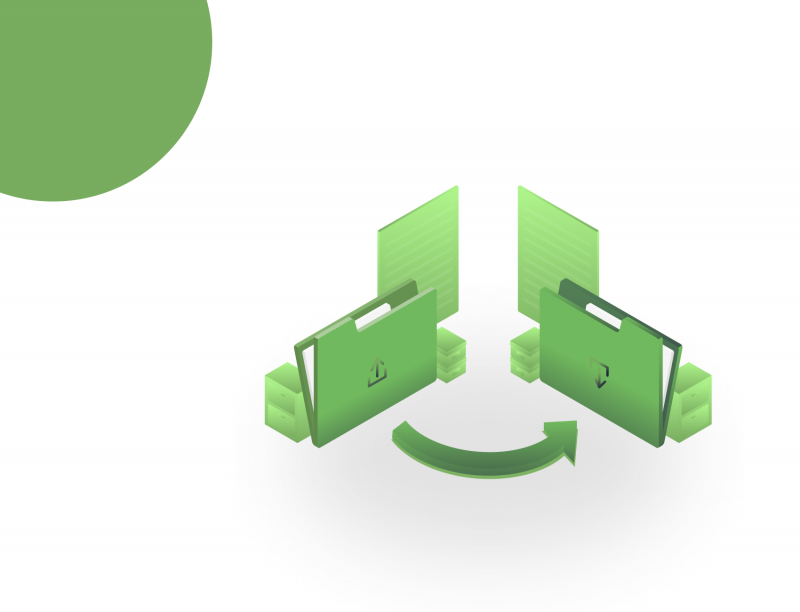Document management is one of the most important features that companies expect from their CRM. It is not only about data storage. Document management covers cooperation on contracts at all sales stages, providing content to clients and partners, and many more. Salesforce, as one of the leading CRM platforms, has a lot of functions that can satisfy most if not all the needs of business users. Let’s see in detail what exactly we can expect from Salesforce document management.
Ready-made solution for Salesforce document management
Salesforce has 5 off-the-shell modules for document management with several variations: Files Home, Salesforce CRM Content, Salesforce Knowledge, Documents Tab, and Attachments.
Files Home is intended for loading, private storing, and sharing documents with team members. Files Home allows for synchronizing the info in documents in real time, regardless of the device used for edits.
Salesforce CRM Content is a popular tool that is used for creation and work with different types of documents (e.g., a presentation or a success story). Employees can share documents with other team members and deliver content to external users.
Salesforce Knowledge is the tool for searching, creating, editing and organizing articles in thematic libraries. You can also use the knowledge base and a particular web portal to deliver documents to coworkers and clients.
Documents Tab is used for the storage of Visualforce files until you need them. For example, it can be a custom logo that you can add to an event in your schedule.
Attachments are designed for adding diverse types of files to records (contracts, offers, or others).
Document organizing
You can rank documents using different criteria and mention them to streamline searching. The search system scans the text of a file and its properties, heading, description, and tags. It uses several filters for classifying search results and makes reports with certain detalization levels.
You also can use Salesforce global search to find documents after integrating an external database with Salesforce, for example, using Salesforce Files Connect.
Out-of-the-box tools to automate document management
Salesforce CRM Content supply several automatization tools: users can subscribe to authors, themes, files, or libraries to be aware of updates. This gives the ability to use appropriate marketing materials for increasing sales and knowledge-sharing. Salesforce automatization tools are not designed for orchestrating the approval of documents and contracts. Yet, you can use Process Builder for sending email notifications about changing the document’s status or turn to Visual Workflow for more complicated logic.
Mass uploading in Salesforce documentation management
You can update documents with the same ID in Salesforce CRM Content Libraries or add numerous links and documents using Salesforce Data Loader. Also, you can use this tool to update the knowledge database and back up CRM records: your Salesforce files will be systematically updated without any effort.
Integration with Google Drive, OneDrive, Box, and other storages
You can connect your file storage system with Salesforce CRM to get access to and manage your external files via Salesforce interface. Salesforce Files Connect is designed for this task; yet, it has several limitations. You can get a connection with Google Docs in a simple way, just adding them into your Salesforce CRM Content Library.
It is important to know that the usage of an external document storage system helps to keep the limited space of Salesforce storage. It will be a good choice if you have a lot of documentation.
Salesforce Lightning and document management
Unfortunately, document management tools are not available in Salesforce Lightning. Clients can use libraries and organize their content with folders, but there are no advanced options. If you want to work with document management, you should use Salesforce Classic. Users can combine these two Salesforce versions (for example, to edit the letterhead or use an email template) or turn to Salesforce experts for a better solution.
Employee collaboration on Salesforce documents
If employees can’t collaborate on documents, a document management system can transform into a simple archive. Salesforce allows users to exchange documents and communicate using a special free tool, Chatter. Chatter is available in both Salesforce Classic and Lightning. Also, Chatter notifies about users’ mentions, accommodates users’ interests, and recommends appropriate content or people. You can exchange files in restricted and public modes and share documents with external users.
Also, you can use Quip, a paid productivity tool that allows users to manage, collaborate on, and store documents (price starts at $10 per month for user). It includes task lists, spreadsheets, and different types of charts. Quip integrates with Chatter and Files Home, works both in Lightning Experience and Salesforce Classic.
Salesforce documents and mobile devices
Salesforce document management is available on mobile devices with limited functionality. For example, users can get access to Files but can’t fully work with Documents. In simple words, users can search for files in libraries, read, and share content, but they can’t:
- change, delete, archive, or restore documents;
- create or change content packages;
- change, or subscribe to libraries;
- manage comments;
- search content by tags.
Visualforce or collaboration tools can help users to overcome the obstacles. Chatter and Quip can work on mobile devices both online and offline modes. Chatter is free for Android and iOS. Quip for mobile works with the basic license.
Pros and cons of OOTB Salesforce document management
Salesforce document management tools are regularly updated, included in Salesforce licenses, and do not require integration or permanent support to work normally.
But these tools also have its limitations, to overcome which Salesforce expertise can be required. Developers can customize the Salesforce platform, enhance the capacity of its functions, or integrate it with the external document system.
Salesforce, as a multifunctional CRM platform, provides powerful document management functionality that will suit the requirements of your company and clients. You can use Salesforce standard document management tools or enhance them by integrating the system with external instruments.





